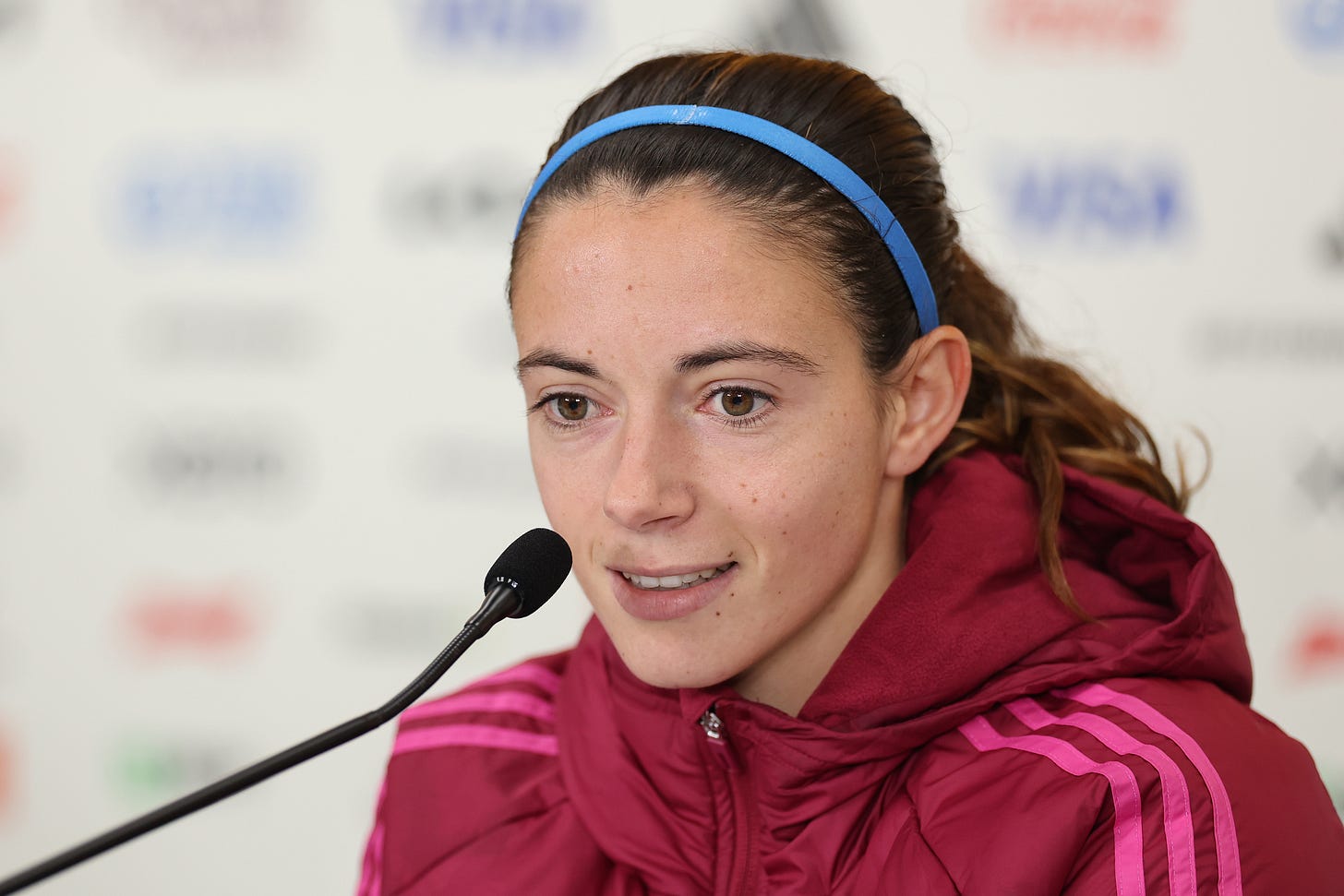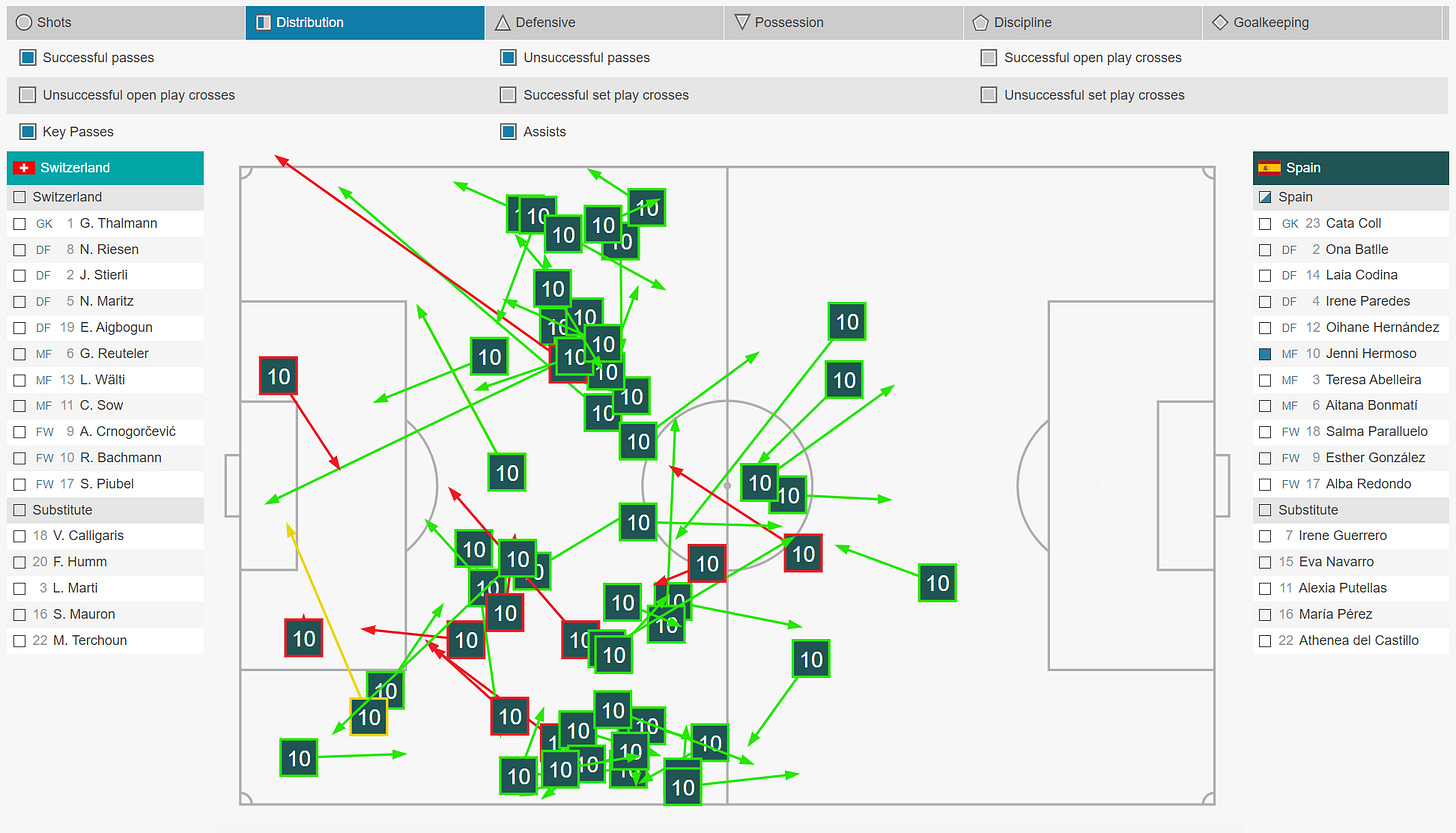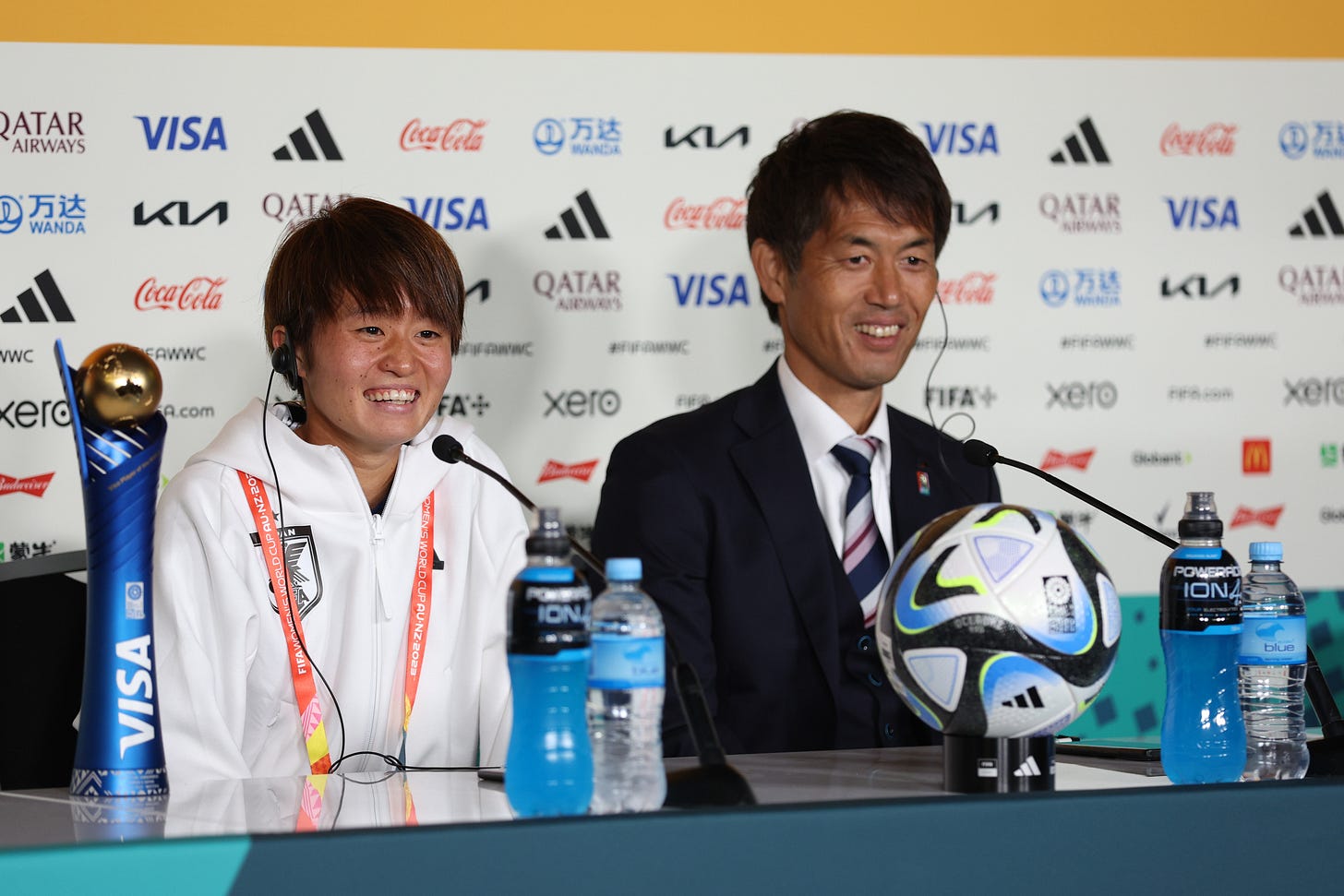Analysis: Japan furthers their credentials as Spain return to top form
Both Group C sides knocked out Group A duo Norway and Switzerland as the second round got under way and reminded why both are well fancied to go far down under...
Spain gets back down to business
Jorge Vilda’s side certainly looked like they had a point to prove when they flew out of the blocks early doors against a Switzerland side who simply had no answer, unless given a helping hand.
A resounding 5-1 win against a team who didn’t concede a single goal in the group stages showed Spain, while still having obvious frailties, will be a contender at this tournament through the quality of their squad, but also the cutting edge nature of their attacking play when things click.
Vilda made some bold calls, mainly replacing Misa Rodríguez in goal with uncapped youngster Cata Coll. Oihane Hernández started at right-back, which meant Ona Batlle switched to the left with Olga Carmona left on the bench.
With captain Ivana Andrés still out, Laia Codina also came in for her first start of the tournament, while Esther González and Alba Redondo started in attack, with Jenni Hermoso dropping back into the midfield role she played against Costa Rica. Double Ballon d’Or winner Alexia Putellas was back on the bench to make way.
The one criticism you can level at Vilda and Spain is they appear to still be trying to find the right formula four games into the tournament, such is the way when suddenly a lot of players return to the squad shortly before the World Cup got under way, players who should have never been in a position to have to walk away in the first place.
How Spain’s defence will recover from what we saw against Japan remains to be seen. Such was the dominance of their midfield on the ball, only Codina’s bizzarre backpass breached Coll’s goal, rather than any attempt at a Swiss threat up front.
The brilliance again of Abelleira in conducting things, Aitana Bonmatí’s absolute class which led to a player of the match display, two goals and two assists, as well as Hermoso proving more effective again dropping into midfield gave Switzerland’s midfield trio of Lia Wälti, Couma Sow and Geraldine Reuteler no grip on the game whatsoever.

The performance was reminiscent of what we saw in that first game against Costa Rica, with Hermoso back in the same role, González up front and Salma Paralluelo again looking more a threat rotating sides with Redondo, who despite being a striker played coming in off the right-hand side.
It also brought more from Bonmatí, who seems to have more freedom with Hermoso more naturally joining the attack to really put pressure on the opposition defence. The Barcelona star was able to get on the ball, but also have the get into the box, and when she did she finished her two goals with a devastating ability to make her strikes look easy.
Spain suits Hermoso in this role too. She can drop deep to get on the ball, but her natural striker instincts when attacking allows Spain to essentially have four natural forwards in the box alongside González, Redondo and Paralluelo. The Pachuca forward again found the net against Switzerland, as did Redondo, and this might just be the best way for Spain to go moving forward, while also needing to settle on a back four, and indeed a goalkeeper.
Switzerland though just couldn’t make an impact. When Spain lost the ball, they played with intensity to get it back in the final third as soon as they can, and looking at how they play it’s no surprise they came into the game with the most pressed sequences of play with 97, well ahead of second place.
But none of their individuals rank highly for the same stat, such is the all-round team effort of swarming the opponent to force them into an error, and it make’s Japan’s efficient performance against that press all the more impressive.
Spain’s front three and midfield three recovered the ball 32 times through the 90 minutes, with Hermoso having the most success with nine regains herself alone, followed by Bonmatí with eight.
Switzerland just couldn’t play out the way they wanted to. The midfield was suffocated and as the back four looked for an outlet, they gave the ball away 26 times between them during the course of the match.
Inka Grings has a lot of burgeoning young talent available to her and there were some good elements for them to take out of this tournament ahead of a huge two years to prepare for their home European Championships in 2025.
Spain meanwhile head to a quarter-final for the first time where they’ll face either Netherlands or South Africa.
Check out over 100 more unique stories in WFC’s Premium section, available for just £45 for 12 months, paid in one go, or a £6 a month rolling subscription.
All subscriptions come with a 7-day free trial to allow you to explore our full archive.
Plus, guarantee you everything that is to come over the next 12 months…
Japan continues to raise the bar
Many felt like this was going to be a walkover based on what we’d seen from both Japan and Norway so far, but I felt there was an intriguing tie to be had, and for the most part it was.
Japan lured Norway into their trap late on as Hege Riise had little choice but to throw on the returning Ada Hegerberg to join Sophie Román Haug up front, allowing Futoshi Ikeda’s side to kill the game with yet another effective counter attack, but up to that point there had been little in the game.
For all the talk of Norway’s continued defensive concerns coming into this tournament, it didn’t really come down to that. Again, at one end, the attack didn’t really click, while it was two major individual errors from their defensive midfielders which really swung the game in the favour of a Japan side who played some lovely football, but weren’t overly testing Aurora Mikalsen.
Ikeda may have just settled on a team now after chopping and changing through the group stage, but the traits of their play remained the same. Reunited strike duo Aoba Fujino and Mina Tanaka continued to drop deep, allowing midfielders to run off them, and it was right wing-back Risa Shimizu and top scorer Hinata Miyazawa who again benefited from being able to break lines and run through on goal to find the net.

Because that has been the key to what we’ve seen from Japan so far this tournament. The strikers drop deep and drift out wide, opening up space for their midfielders to burst forward, with Miyazawa doing it better than anyone, leading her to score her fifth goal and become a serious contender for the Golden Boot.
Norway also tweaked things to try and stop them. Riise finally teamed up Ingrid Engen and Vilde Bøe Risa rather than going with one or the other, but sacrificed their largest creative influence so far in Frida Maanum in favour of a more balanced defensive set up.
Beyond Engen’s unfortunate own goal on the stretch to put Japan, it largely had the desired effect, but they struggled to influence the game at the other end beyond Guro Reiten’s header to equalise. Engen would often drop so deep to try and marshal Tanaka’s movement that a lot of the time she would form a back three with Maren Mjelde and Mathilde Harviken.
An inability to regularly get either Emilie Haavi or Caroline Graham Hansen meant their one key threat of an aerial advantage against Japan was effectively neutralised, with them unable to get the necessary service into Haug who cut a lone figure inside the box.
Japan definitely came out with a bit more purpose after the break and it was another wand of a ball from Jun Endo’s left foot which got the ball rolling. Japan has absolutely nailed the disguised pass in this tournament and Endo’s latest attempt wiped out Norway’s midfield as Bøe Risa failed to track Miyazawa, before the midfielder inadverently played a loose pass which Shimizu finished off.
It was unfortunate for Norway who until then had largely exceeded expectations against the most impressive side in the tournament so far. When Hegerberg was introduced alongside Haug, Japan hit a third with a devastating similar cut-throat attack to what we saw against Spain.
Japan has now had the most direct attacks (under 10 passes) in the tournament and have become the first to score more a single goal as a result of them. They waste no time in trying to penetrate an opposition defence when they get inside the final third, but their finishing has been devastatingly clinical.
Ikeda’s side have now scored seven of their last eight shots on target, and one of the key questions will be can they keep that efficiency up heading into what will be a tough quarter-final against either Sweden or world champions USA.





